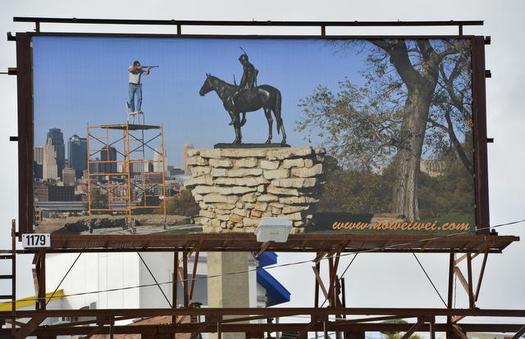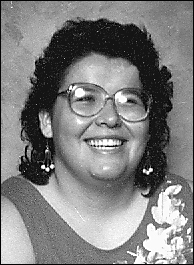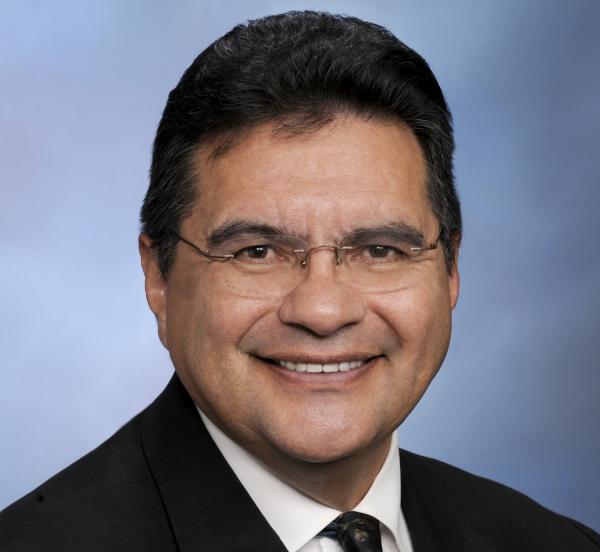Deadly Combo: 91 Elephants Slaughtered by Poachers Using Cyanide From Illegal Gold Mines

Elephant carcasses rot, the stench hanging on the air, in Hwange National Park, Zimbabwe, on September 29, 2013. Officials said that at least 91 animals had been poisoned with cyanide by poachers who hack off the tusks. Poachers poisoned the salt licks around the majestic beasts’ watering holes with cyanide, authorities said.
Source: Indian Country Today Media Network
The mineral-rich salt licks scattered around watering holes commonly draw elephants and other animals. But these familiar fixtures became death traps sometime in the past month for at least 91 elephants when poachers filled them with cyanide taken from illegal gold-mining operations.
The horrific tactic killed not only the majestic beasts but also lions, hyenas and vultures that fed on the remains or drank the water, authorities in Zimbabwe’s Hwange National Park, where the slaughter took place, told the Associated Press. The lethal chemical “attacks the bloodstream, kills almost instantly and causes rapid decomposition,” the AP noted.
Once the elephants were dead, their tusks were hacked off and smuggled out of the country.
“The magnitude of what we are witnessing today is much higher than what has occurred previously,” Zimbabwe’s environment minister, Saviour Kasukuwere told reporters as he toured the scene.
Authorities have arrested nine people suspected of poaching, the AP said, with three men sentenced to 16 years in prison.
The situation of elephants in Africa as a whole is dire, with poaching putting the species at risk for extinction. The Central African Republic is another site of unremitting elephant slaughter, The New York Times reported in a series a year ago.
RELATED: NYT Series Explores Epic Elephant Poaching That Threatens Species’ Survival
At least 35,000 elephants were killed in Africa during 2012 alone, according to the Wildlife Conservation Society. That’s 96 per day.
Last December the United Nations flagged illegal wildlife trafficking, including that of elephant and other endangered animal parts, as a dire problem—and an illegal global trade worth copy9 billion per year.
RELATED: Trafficking of Wildlife Marks Fourth Largest Illegal Global Trade, Worth copy9 Billion Annually
National Geographic detailed the slaughter and how it is fueled by the Chinese ivory market in an October 2012 series, Blood Ivory. And in 2011 Vanity Fair gave a haunting portrayal of elephant slaughter by the poverty-stricken Maasai, who once revered them, in Agony and Ivory.
Those poachers commonly shoot from helicopters with high-powered assault rifles. But the poison method has caused an environmental crisis as well as hurt elephant populations, the AP said. Zimbabwe’s Environmental Management Authority will burn the cyanide-laced carcasses and will have to remove the toxin from the areas where it has been spread. The salt licks must be dug out, the AP said, and the top layers of soil removed—everything that has been contaminated with cyanide granules.
Moreover, two deep wells that supply the watering holes may also be poisoned and need to be sealed, the AP reported, and new wells are needed. This will be hard because the agency is underfunded and understaffed in Zimbabwe’s struggling economy.
Nevertheless, Kasukuwere said the country would stand firm against poaching.
“We will cooperate with international organizations such as Interpol to crack down on the pay masters,” he told reporters. “So the war is on, it’s a war which we will win, we are not going to surrender.”
Read more at http://indiancountrytodaymedianetwork.com//2013/10/02/deadly-combo-91-elephants-slaughtered-poachers-using-cyanide-illegal-gold-mines-151544
Protect your Winter Landscape from Hungry Wildlife
By gardening expert Melinda Myers
There’s no doubt that managing critters in the landscape can be a challenge especially as food supplies start to dwindle. If you are battling with rabbits, deer, groundhogs or other wildlife, don’t let down your guard as the growing season begins to wind down.
Be proactive. Start before they get into the habit of dining on your landscape. It is easier to keep them away than break the dining habit.
Fence them out. Fencing is the best defense against most wildlife. A four feet tall fence around a small garden will keep out rabbits. Secure the bottom tight to the ground or bury it several inches to prevent rabbits and voles from crawling underneath. Or fold the bottom of the fence outward, making sure it’s tight to the ground. Animals tend not to crawl under when the bottom skirt faces away from the garden
Go deeper, at least 12 to 18 inches, if you are trying to discourage woodchucks. And make sure the gate is secure. Many hungry animals have found their way into the garden through openings around and under the gate.
A five foot fence around small garden areas can help safeguard your plantings against hungry deer. Some gardeners report success surrounding their garden with fishing line mounted on posts at one and three foot heights.
Break out the repellents. Homemade and commercial repellents can be used. Apply before the animals start feeding and reapply as directed. Consider using a natural product like Messina’s Animal Stopper (www.Messinas.com). It is made of herbs, safe to use and smells good.
Scare ‘em away. Blow up owls, clanging pans, rubber snakes, slivers of deodorant soap, handfuls of human hair and noise makers are scare tactics that have been used by gardeners for years. Consider your environment when selecting a tactic. Urban animals are used to the sound and smell of people. Alternate scare tactics for more effective control. The animals won’t be afraid of a snake that hasn’t moved in weeks.
Combine tactics. Use a mix of fencing, scare tactics and repellents. Keep monitoring for damage. If there are enough animals and they are hungry, they will eat just about anything.
Don’t forget about nature. Welcome hawks and fox into your landscape. Using less pesticides and tolerating some critters, their food source, will encourage them to visit your yard. These natural pest controllers help keep the garden-munching critters under control.
And most importantly, don’t give up. A bit of persistence, variety and adaptability is the key to success. Investing some time now will not only deter existing critters from dining in your landscape, but will also reduce the risk of animals moving in next season.
Gardening expert, TV/radio host, author & columnist Melinda Myers has more than 30 years of horticulture experience and has written over 20 gardening books, including Can’t Miss Small Space Gardening. She hosts The Great Courses “How to Grow Anything” DVD series and the nationally syndicated Melinda’s Garden Moment segments. Myers is also a columnist and contributing editor for Birds & Blooms magazine. Myers’ web site, www.melindamyers.com, offers gardening videos, podcasts, and garden tips.
Fall recipe: Pumpkin chocolate chip cookies

By Monica Brown, Tulalip News Writer
TULALIP, Wa. – I’ve tested two other recipes and this was by far the better and easier one. This recipe is from chef-in-training.com and I added more spices to give the cookies more of a pumpkin pie taste. The cookies are soft and have a pumpkin taste that isn’t overwhelming. I would suggest using at least cinnamon and nutmeg; the clove, ginger and allspice are optional.
I made the mistake of using pumpkin pie filling the first time, please don’t try that. Pumpkin pie filling has added spices, sodium, and sugar which make it delicious for pie but incompatible for cookies. Use either homemade or canned pumpkin puree; if you can’t tell from the label that it contains only pumpkin look at the ingredients on the back and it should list pumpkin only.
Some may be thinking, why shortening, why not butter? Since the recipe calls for pumpkin this adds quite a bit of extra water and in order to remove the excess moisture the cookies need to be baked longer at a higher temperature which butter just can’t do. There are other recipes that call for butter but they produce soggy cookies and if you cook them any longer or at a higher temp they will burn. You can use butter instead of shortening but to avoid the excess moisture try adding oatmeal, or pre-boil the pumpkin and cool before adding. Also, do not just add more flour and hope it will counteract the moisture; this will make little puff balls that will be dense and cake like.
Wet ingredients:
1 cup shortening or buttered flavored shortening
1 cup white sugar
1 cup pumpkin puree (about ¾ of a 15oz can)
1 egg
Dry ingredients:
2 cups flour
1 tsp baking soda
1 tsp salt
1 tsp gound cinnamon
¼ tsp ground nutmeg
¼ tsp ground clove optional
A pinch each of ground ginger and ground allspice optional
And 1 -2 cups milk chocolate chips as desired
Preparation:
In a medium bowl, measure and sift together dry ingredients, this step is meant to equally distribute the spices.
In a large bowl mix together shortening, sugar and pumpkin, after blended add egg and mix well. Slowly add in the dry mix, once combined stir in chocolate chips.
On a nonstick, greased or parchment lined cookie sheet drop spoonful’s of cookie dough, spaced about 2 inches apart. Bake at 375 for 10-12 minutes. Cool cookies on wire rack and store in a ventilated container since they still contain a lot of moisture. Makes about 48 cookies.
Original recipe on www.chef-in-training.com
Scout sculpture billboards taken down amid racism accusations

Billboards depicting a rifleman taking aim at the iconic Kansas City sculpture “The Scout” were taken down Monday after drawing a whirlwind of spirited reaction.
Artist A. Bitterman had rented the twin billboards near 19th Street and Baltimore Avenue in the Crossroads Arts District after Missouri Bank had accepted, but then rejected, the work for its Crossroads “Artboards” program.
The work went up Sept. 23 and was supposed to be displayed until Oct. 21, according to Bitterman’s website.
“I was very glad to see that,” Moses Brings Plenty said of the news that the billboards were taken down. A member of the Oglala Lakota nation and the community outreach coordinator for the Kansas City Indian Center, he had vociferously opposed the work as a symbol of racism and hatred.
“I did it for our children,” he said. “Our common enemy is racism.”
A message seeking comment from officials at CBS Outdoor, which had rented the billboard space, was not returned Monday.
Bitterman did not respond to an email seeking comment, but in a post on his website dated Sunday, he sought to explain his intention:
“The one thing that can not be disputed in my image is the fact that the Scout is not an indian at all, it is a depiction of an Indian, a sculpture, created by and for white culture, and it carries a historical narrative of what white people at the turn of the 20th century wanted the indian to be. The artist on the scaffolding is confronting that narrative.”
In an earlier post, Bitterman wrote, “If anything The Scout is a gesture in defense of the native American.”
Key Thoughts From KeyBank: Indian Country and America’s Energy Needs
Source: Indian Country Today Media Network
The United States is entering a new age in energy: Natural resources are rapidly being unlocked by new technologies, and the market for renewable energy sources is booming. That’s good news for Indian country.
Native American lands contain huge amounts of natural resources, the vast majority of which is undeveloped. The U.S. Department of the Interior estimates that there are 15 million acres of potential energy and mineral resources on tribal land compared to 2.1 million acres already in use. If fully developed, energy projects could add billions in revenues to tribes, helping them build their economies, create jobs and achieve a better quality of life.
Oil and gas has great potential: The Navajo Nation in the Southwest, the Three Affiliated Tribes in North Dakota and Alaska Native Corporations are engaged in large extraction enterprises. And some tribes like the Southern Ute own companies that manage the entire exploration and development undertaking.
Major coal operations are taking place on Navajo, Hopi and Crow lands, and many tribes have sizeable reserves available for development. Tribal lands also have considerable potential for hydroelectric projects and renewable energy production. For example, the Moapa Band of Paiutes in Nevada is launching the first large-scale solar project on Native soil.
Taking full advantage of natural resource opportunities requires access to capital, both debt and equity and a strategy that protects the land through conservation and sustainable practices. Just as important, it requires careful planning and a financial advisor that understands each Nation’s laws and values.
“Key is uniquely well positioned to work with tribes and energy development,” said Mike Lettig, director of KeyBank’s Native American Financial Services. “When our bankers team up with KeyBanc Capital Markets energy specialists, we ensure that our financial solutions meet Native America’s short- and long-term natural resource objectives.”
Securities products and services such as investment banking and capital raising are offered by KeyBanc Capital Markets Inc., Member NYSE/FINRA/SPIC. Banking products are offered by KeyBank National Association.
Read more at http://indiancountrytodaymedianetwork.com//2013/10/01/key-thoughts-keybank-indian-country-and-americas-energy-needs-151500
Obituary: Patricia Ann “Patty” Baker
 Patty was born December 30, 1973 to Marge Baker and Carl Rehder Jr. She entered into rest September 25, 2013. Patty graduated from Marysville-Pilchuck High School. She loved crocheting, knitting, embroidering, bowling and her little wiener dogs. She loved her nieces and nephews, and her favorite sister, Christy. Visitation will be held Sunday, September 29, 2013 at 1:00 p.m. at Schaefer-Shipman Funeral Home with an Interfaith service to follow at 6:00 p.m. at the Tulalip Tribal Gym. Funeral Services will be held Monday, September 30, 2013 at 10:00 a.m. at the Tulalip Tribal Gym with burial following at Mission Beach Cemetery. Arrangements entrusted to Schaefer-Shipman Funeral Home. – See more at: http://www.legacy.com/obituaries/heraldnet/obituary.aspx?n=patricia-ann-baker-patty&pid=167184945&fhid=2242#sthash.tnP1Dv0W.dpuf
Patty was born December 30, 1973 to Marge Baker and Carl Rehder Jr. She entered into rest September 25, 2013. Patty graduated from Marysville-Pilchuck High School. She loved crocheting, knitting, embroidering, bowling and her little wiener dogs. She loved her nieces and nephews, and her favorite sister, Christy. Visitation will be held Sunday, September 29, 2013 at 1:00 p.m. at Schaefer-Shipman Funeral Home with an Interfaith service to follow at 6:00 p.m. at the Tulalip Tribal Gym. Funeral Services will be held Monday, September 30, 2013 at 10:00 a.m. at the Tulalip Tribal Gym with burial following at Mission Beach Cemetery. Arrangements entrusted to Schaefer-Shipman Funeral Home. – See more at: http://www.legacy.com/obituaries/heraldnet/obituary.aspx?n=patricia-ann-baker-patty&pid=167184945&fhid=2242#sthash.tnP1Dv0W.dpufBreaking Bad or Already Broken? Drug Crime on the Rez Is All Too Real
By Walter Lamar, Indian Country Today Media Network
What does it say about safety in Indian country when a television plot featuring meth distribution incorporates tribal land? Breaking Bad might give Indian country the new name of “Broken and Bad” after the brutal television series, featuring tribal lands, exemplified a continuing public safety crisis. Season 5, Episode 13, entitled “To’hajiilee,” aired on September 8, 2013 and marks the beginning of the end for the wildly popular AMC series. It’s also one more example of how the media persistently depicts Indian country as the place to go to commit drug crimes, murder, and general mayhem.
From the very first episode, and periodically throughout the series, the remote To’hajiilee lands have been the setting for drug manufacture, murders, and concealing evidence. To’hajiilee is a non-contiguous section of the Navajo Nation lying in parts of three New Mexico counties, about 32 miles west of Albuquerque. Despite its proximity to an urban area, To’hajiilee feels isolated and remote. A tangle of secondary roads, many both unmarked and unpaved, crisscross the reservation’s 121 square miles. With only 2000 residents, you may go miles without seeing a soul. In “Breaking Bad,” the series of crimes committed on these tribal lands (theft, murder, extortion, drug manufacture and distribution, assault and much else), set the stage for what promises to be a violent and action-packed series finale.
To’hajiilee is not so different from tribal lands across the nation. All this got me to thinking, “What if the crime depicted in Episode 13 had really happened?” The To’hajiilee reservation is in trust status, which means concurrent federal and Navajo Nation criminal jurisdiction. Federal statute and Navajo Nation codes, ordinances and statutes govern the activities of visitors and residents. But wait, it’s not that easy. Indian Country is the only place in the world where jurisdiction is dependent on race. When a crime is committed within the exterior boundaries of the reservation, law enforcement has to determine if the perpetrator is American Indian, if the American Indian perpetrator is an enrolled tribal member of a federally recognized tribe, whether a tribal or federal statute is being violated, whether the land is indeed trust land, and whether officers responding to a crime are properly certified or deputized.
With that in mind, back to how the To’hajiilee showdown might play out in reality. White supremacists show up with fully automatic weapons (non-Natives to be sure), called by drug kingpin Walter White (another non-Native) when approached by two armed DEA agents and their informant. Everyone knows that $80 million in cash is buried in plastic barrels at the site. Predictably, the shooting starts. Some folks are wounded, some killed. Let’s say one of the wounded tries to make a panic-stricken call to 911. Too bad there’s not good cell phone coverage on the rez— he is out of luck. But wait, some distance away, a Navajo family hears the SUVs rumbling by, followed by a barrage of gunfire, and one heroically drives to a spot of known cell coverage and calls 911. The 911 call gets routed to a surrounding country dispatch, who places a telephone call to Navajo Police dispatch at Crownpoint, New Mexico.
Only about 300 officers patrol the Navajo Nation, which covers a territory larger than many US states. The tribal government has been active in stepping up law enforcement activity under the Tribal Law and Order Act, but cuts in funding have prevented the tribe from hiring anywhere close to the level they need- estimated to be about 800 officers. A couple of officers are on duty at the To’hajiilee substation when the call comes in, and one of them responds by driving to meet the family who called. They direct him toward the area where they heard the gunshots.
The brave officer approaches the scene and finds himself seriously outgunned. When fired upon, he retreats and finds that he doesn’t have radio coverage to call for help, so he drives until he gets a signal so he can communicate he has been fired upon and that there are multiple armed subjects. At best, there are two other Navajo Nation officers on duty at To’hajiilee and back up is 118 miles away in Crownpoint. Back at the substation, they call in to the FBI and the BIA, 32 miles away in Albuquerque. They think about calling in the State Patrol (“Wait, is there a cross-deputation agreement in place? Who could we ask?”). Then they realize, “Whoa, is the incident for certain on our land? Isn’t that near the boundary with Laguna Pueblo? Do we call them, too?”
Meanwhile, the white supremacists kill everybody, grab the money and head out. After no shooting for a period of time, the Navajo officer cautiously approaches the crime scene fraught with death and destruction, over an hour after gunshots are first heard. Later, the FBI and BIA arrive on scene. They realize two DEA agents are among the dead. The FBI and DEA immediately engage in a turf battle as to primary jurisdiction. BIA is caught in the middle and the tribal police are left out. Another twist comes when US Attorney’s office decides where and how survivors are going to be prosecuted, a result of Oliphant v. Suquamish Indian Tribe, a 1978 United States Supreme Court case wherein the court found that non-Indians are not subject to tribal jurisdiction.
Sure, television is fanciful, but it’s true that criminals have found that doing business in Indian country is profitable because of the remoteness, the lack of officers on patrol, and the jurisdictional tangles created by non-Indian crime on Indian land. Tribes struggle constantly with violent crime and drug trafficking committed by non-tribal members. Meth certainly is a problem on the Navajo Nation and elsewhere in Indian Country; Native Americans are more than twice as likely to abuse this terrible drug.
The effects of meth on people and the environment are truly horrific and would require another article to describe. Methamphetamine use affects the user’s physical health, mental health and emotional stability. The production creates toxic fumes and chemicals, as well as explosive gases, and abatement can require residential demolition. Children exposed to meth either in utero or in the home can develop neurological, cognitive, developmental and behavioral problems.
The Navajo Nation actually has a zero-tolerance policy toward methamphetamine sales, and in the past, the Navajo Nation Division of Public Safety has successfully collaborated with the Drug & Gang Unit, the FBI, the BIA, the Flagstaff police and even the Phoenix police to investigate, arrest and prosecute meth distributors, resulting in entire rings being busted up.
There hasn’t been a high-profile arrest in years, but it’s not necessarily because there are fewer people manufacturing, smuggling or selling drugs on our tribal lands. Just as with tribes across the country, the Navajo Nation police, courts and corrections have been hit hard by the double whammy of planned budget cuts and an across-the-board sequester. The Navajo Nation Department of Corrections has completed two new jails, built as part of the TLOA promise, but the department faces a shortfall in completing the remaining five, or even staffing the new ones. Law enforcement is staffed at less than half of recommended levels. Criminal investigators routinely cover 600 or 700 miles a day to accomplish a single task. The 19 lawyers in the US Attorney’s office dedicated to prosecuting crime are too few to cope with the volume of cases, and end up declining to prosecute about half the time.
Everyone is frustrated by their inability to curb the violent drug crimes that are occurring in their jurisdictions. Officers at Fort Peck, another large reservation, know about drug smuggling from Canada, but often can’t respond in time when planes touch down on remote airstrips. Tribal law enforcement from New York to California know about gang or cartel members who seduce Native women, who protect them (and abet them) as they distribute drugs in the jurisdictional limbo of Indian Country.
How do cartels know that Indian country is the best place to commit crimes? To come around full circle, we can thank the media, from NPR to the New York Times, for sensationalist coverage about reservation crime. Breathless coverage of a Mexican drug trafficking organization on the Wind River Reservation, who exploited Native women to move meth, spurred copycat cases across the country. Evidence collected in one cartel bust actually yielded a Denver Post article discussing how hard it is for drug dealers to get busted in Indian country.
What can be done? The fact is that meth use is ever so slowly lessening its grip on our people, and part of the change is coming from community members. Events like Meth éí Dooda Awareness Day involve everyone in the community from small children to grandparents, and from people in recovery to representatives of the tribal government. In the case of tribal communities like To’hajiilee, outreach to citizens on the best information to give to 911 for a speedy response would also help. Community awareness is the first step in community policing, but there has to be actual policing as well, and that’s where the stumbling block remains.
To effectively police the lands under their jurisdiction, tribal police need resources, and they just don’t have them now. The Tribal Law and Order Act, if fully funded, would enable tribal police departments to patrol remote territory, to negotiate shared resources with state and county agencies, to engage in outreach to endangered youth, and to staff tribal courts and tribal prosecutors’ offices. Congress is back in session this month and we need to put pressure on them to address this problem by fully funding TLOA.
This week, To’hajiilee made the news again as catastrophic flooding hit the Navajo Nation and took out a chunk of the Interstate through the To’hajiilee lands, in the midst of evacuations in many communities, and alarm about the dam failing. The Navajo first responders worked smoothly with each other and with state police and tribal agencies to rescue, evacuate, direct traffic and keep the dam from breaching. Our Native law enforcement officers have proved that they can meet the challenge of To’hajiilee’s real-life crisis. The question remains whether Congress can meet the challenge of keeping their promise to our tribal police.
Read more at http://indiancountrytodaymedianetwork.com/2013/09/29/breaking-bad-or-already-broken-drug-crime-rez-all-too-real-151493
Government Shutdown Frustrates Tribal Leaders
Rob Capriccioso, ICTMN
The federal government has a trust responsibility to tribes and their citizens. It is a unique relationship, which means there will be unique – and painful – consequences as a result of the government’s current shutdown, tribal leaders say.
The shutdown, which began at 12:01 a.m. on October 1, occurred because U.S. House Republicans passed several short-term continuing resolution budgets that included provisions to delay and/or defund portions of the Affordable Care Act, widely known as Obamacare. Both the Democratic Senate and White House would not agree to those provisions, which set the stage for the first federal shutdown in 17 years.
Tribal leaders, widely tired of political games surrounding the federal budget – as well as the profound impacts of ongoing sequestration – are frustrated, to say the least.
“What is just partisan game playing in Washington, D.C. is a battle for survival in Indian country where many of us barely subsist,” said Edward Thomas, president of the Central Council of Tlingit and Haida Indian Tribes. “Many of our 28,000 tribal citizens live at the very edge of survival and depend upon our tribe’s ability, with federal funding, to provide critical human services.
“Any interruption in federal funding, especially for a self-governance tribe like ours without gaming or other substantial economic development, means we must borrow money – from an expensive line of credit we cannot afford – to meet our payroll obligations to child welfare workers, to job trainers, to housing workers, and to natural resource subsistence protection,” Thomas said.
Ron Allen, chairman of the Jamestown S’Klallam Tribe, said he was disappointed in Republican House tea party members for insisting on defunding Obamacare as part of the budget process. “’My way or the highway’ is not a way to run the federal government,” Allen said. “Tribal leaders have many frustrations with the federal government, but we try to find ways to make it work. That’s what Congress needs to be doing.”
Allen predicted that the shutdown would be “devastating” for over half of the tribes he estimates do not have gaming or other enterprises to fall back on for funding during a federal shutdown. “So many of us – the majority – of tribes are dependent on federal resources,” he said. “It’s going to be tough for the tribes.”
Dozens of tribal leaders have voiced similar concerns to officials with the Departments of the Interior, Health and Human Services, and other federal agencies that serve large amounts of American Indians, according to federal officials. The White House, heeding that concern, held a teleconference with some tribal leaders on September 30 during which administration officials blamed the House Republicans for the shutdown. Kevin Washburn, Assistant Secretary for Indian Affairs at Interior, also sent a letter to tribal leaders explaining the department’s contingency plan.
The House’s attempt to tie a suspension of Obamacare to a budget bill is unpopular with tribal leaders, as many tend to support the law, since it includes provisions to support the Indian Health Care Improvement Act. If Republicans had their way, a new way to support that Indian health-focused part of the law would be necessary unless lawmakers agreed they no longer wanted to focus on improving Indian health via that law. Republicans will not have their way, however, as Obamacare is the crown jewel of Barack Obama’s presidency to date, and Democrats have been trying to pass universal healthcare since Franklin D. Roosevelt in the 1930s.
The real impact on tribes will depend on how long the government is shuttered. It will stay closed until the House Republicans and Senate Democrats can agree on a plan to fund it.
Congress and the president will still be paid during the shutdown.
Public opinion to date is largely against the House Republican position, yet many tea party GOPers, over objections of more moderate Republicans, continue to favor a budget bill that ties Obamacare to it. They have made the case that Obamacare, which goes in effect October 1, is too costly, so they believe it is worth delaying. But Obamacare is intended to reduce health-care costs for individuals and the country, Democrats have countered. And even with the shutdown, Obamacare will still be implemented.
Ironically, the most recent continuing resolution that has passed both the House and Senate thus far – excluding the Obamacare portions – is good for Indian country in that it does not include provisions pushed by the White House Office of Management and Budget that would limit the federal government’s payment of contract support costs to tribes. “That’s encouraging,” Allen said, noting that the White House proposal to cap tribal contract support costs was originally included in the Senate continuing resolution, but faced with widespread tribal opposition, it was withdrawn by Senate leadership. “We have some key people who are supportive of keeping it out.”
RELATED: White House Trying to Cheat Tribes on Health Costs
Tribal advocates are widely hopeful that once a long-term budget is agreed on – however long that takes – funding for tribal contract support costs will be included without a cap, despite lingering White House opposition to paying its tribal bills.
Despite progress on the contract support cost front, the continuing resolution supported by the House, Senate and White House maintains funding for Indian country at a sequestered level, which means programs that support tribes continue to face dramatic cuts. A joint decision by Congress and the White House, first made in 2011 and carried out on March 1 of this year, allowed an across-the-board 9 percent cut to all non-exempt domestic federal programs (and a 13 percent cut for Defense accounts). This sequester has dramatically harmed Indian-focused funding, and tribal leaders across the nation have claimed it is a major violation of the trust responsibility relationship the federal government is supposed to have with American Indians, as called for in historic treaties, the U.S. Constitution and contemporary American policy.
“The tribes would rather their budgets be exempt from this stuff,” Allen said. “But the political ability for that to happen is next to nil. The new options that people are considering is pushing for two years or longer forward funding for Indian health programs and essential government services, like some programs for veterans.”
Tribal leaders have been pushing hard to get sequestration on Indian programs removed, Allen noted, but the White House has said that it is not going to protect any programs. When asked by tribal leaders if tribes could be exempted from sequestration given the Obama administration’s stated belief in federal-tribal trust responsibility, Charlie Galbraith, the Associate Director for Intergovernmental Affairs at the White House, said at a February gathering of the United South and Eastern Tribes, “That’s just not going to happen. We have the entire military machine, every lobbyist, every contractor, trying to exempt the military provision—the president is not going to cut this off piecemeal. We need a comprehensive solution that is going to address the real problem here.”
RELATED: A Miscalculation on the Sequester Has Already Harmed Indian Health
Beyond Obamacare, contract support costs and sequestration, the immediate impact of the shutdown will be on the federal workforce, and that impact will soon trickle to Indian country. Overall, approximately 800,000 non-essential government employees are expected to be furloughed.
At the U.S. Department of the Interior, 2,860 of 8,143 employees focused on Indian affairs will be laid off during this shutdown. At the Bureau of Indian Affairs (BIA) alone, the following programs will cease, according to the DOI.gov/shutdown website: management and protection of trust assets such as lease compliance and real estate transactions; federal oversight on environmental assessments, archeological clearances, and endangered species compliance; management of oil and gas leasing and compliance; timber harvest and other natural resource management operations; tribal government related activities; payment of financial assistance to needy individuals, and to vendors providing foster care and residential care for children and adults; and disbursement of tribal funds for tribal operations including responding to tribal government request.
The situation is less dire at Interior for Indian affairs cutbacks than it had been during previous shutdowns in the 1990s, Interior officials said, because they have since implemented a forward-funding plan in the areas of education and transportation, which will keep the employees in those areas working. There is also a comparatively larger law enforcement staff that will remain on duty through the shutdown, and power and irrigation employees will be able to continue working to deliver power and water to tribal communities because their salaries are generated from collections, not appropriated funds.
Employees at the Indian Health Service (IHS), which provides direct health service to tribal citizens, will be largely unaffected by the shutdown. Under Department of Health and Service’s shutdown plan, IHS will continue to provide direct clinical health care services as well as referrals for contracted services that cannot be provided through IHS clinics. On the negative side, “IHS would be unable to provide funding to Tribes and Urban Indian health programs, and would not perform national policy development and issuance, oversight, and other functions, except those necessary to meet the immediate needs of the patients, medical staff, and medical facilities,” according to a plan released by the agency.
Chris Stearns, a Navajo lawyer with Hobbs Straus, said the current shutdown is another hit to the relationship between the federal government and tribes. “The trust responsibility, and the right to federal services, which Indian country has already paid for with its lands, will be diminished,” he said of the current situation. He should know, having worked on Capitol Hill during the government shutdowns of the mid-1990s, which saw thousands of BIA employees laid off, and lease payments to tribes and individuals delayed.
Now, like a bad dream, it’s happening all over again.
“Perhaps it might be fair, if during a shutdown, Indian tribes got to take back our lands in lieu of payments,” Stearns said.
Read more at http://indiancountrytodaymedianetwork.com/2013/10/01/government-shutdown-frustrates-tribal-leaders-151517
‘Killer Whale Tales’ returns Saturday
Source: The Herald
EVERETT — Researcher and professional photographer Jeff Hogan brings back his “Killer Whale Tales” to the NW Stream Center in Snohomish County’s McCollum Park, 600 128th Street SE, Everett.
The show is at 11 a.m. Saturday.
Hogan will show surface and underwater photos and videos. After attending this show, people will be able to identify when a whale is swimming to get to another location, hunting for salmon or just playing.
Hogan will also discuss the sleeping habits of orcas: Their brains are so large that they put half their brain to sleep, but use the other half to keep on the move.
Hogan also will provide a unique view of what it is like to swim with the San Juan orcas, thanks to a research webcam that was temporarily attached to a very large male killer whale’s dorsal fin.
He also will provide news on the baby orca that was born earlier this year and bring along a whale skull for people to examine.
Cost is $5 for Adopt A Stream Foundation members, $7 non-members. Proceeds benefit the Adopt A Stream Foundation’s Streamkeeper Academy.
Call 425-316-8592 now to register. Space is limited.










